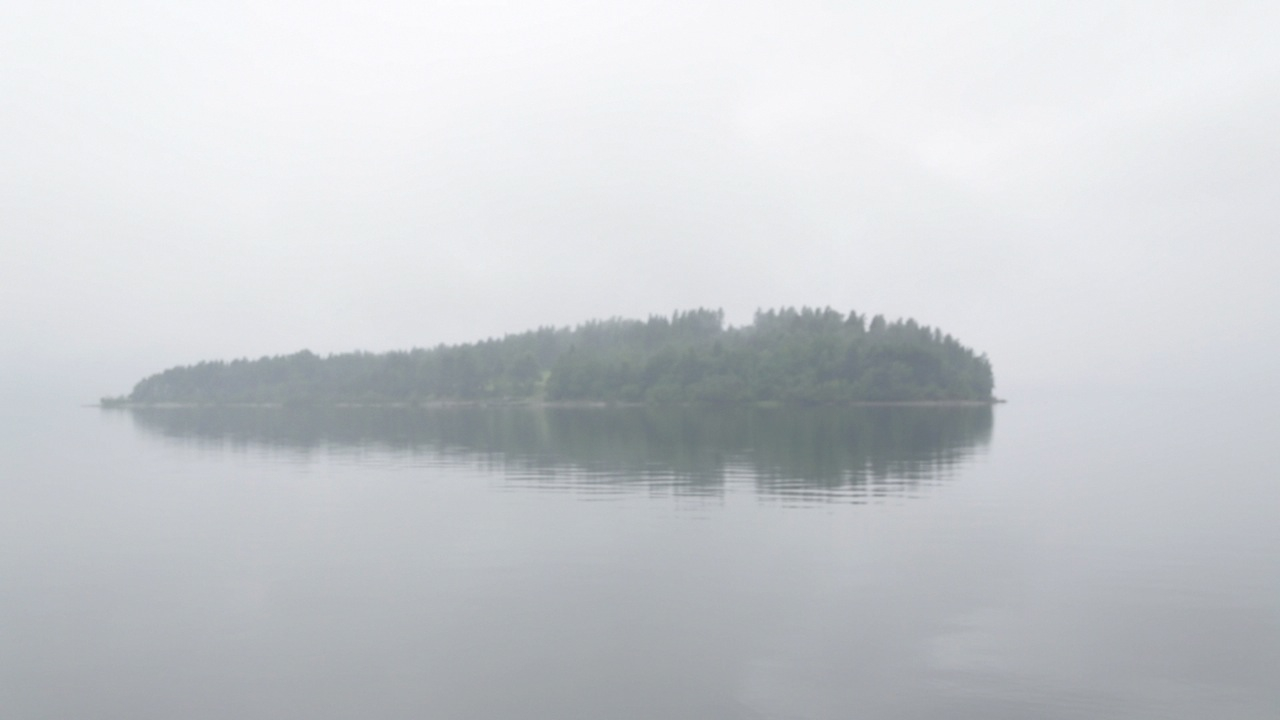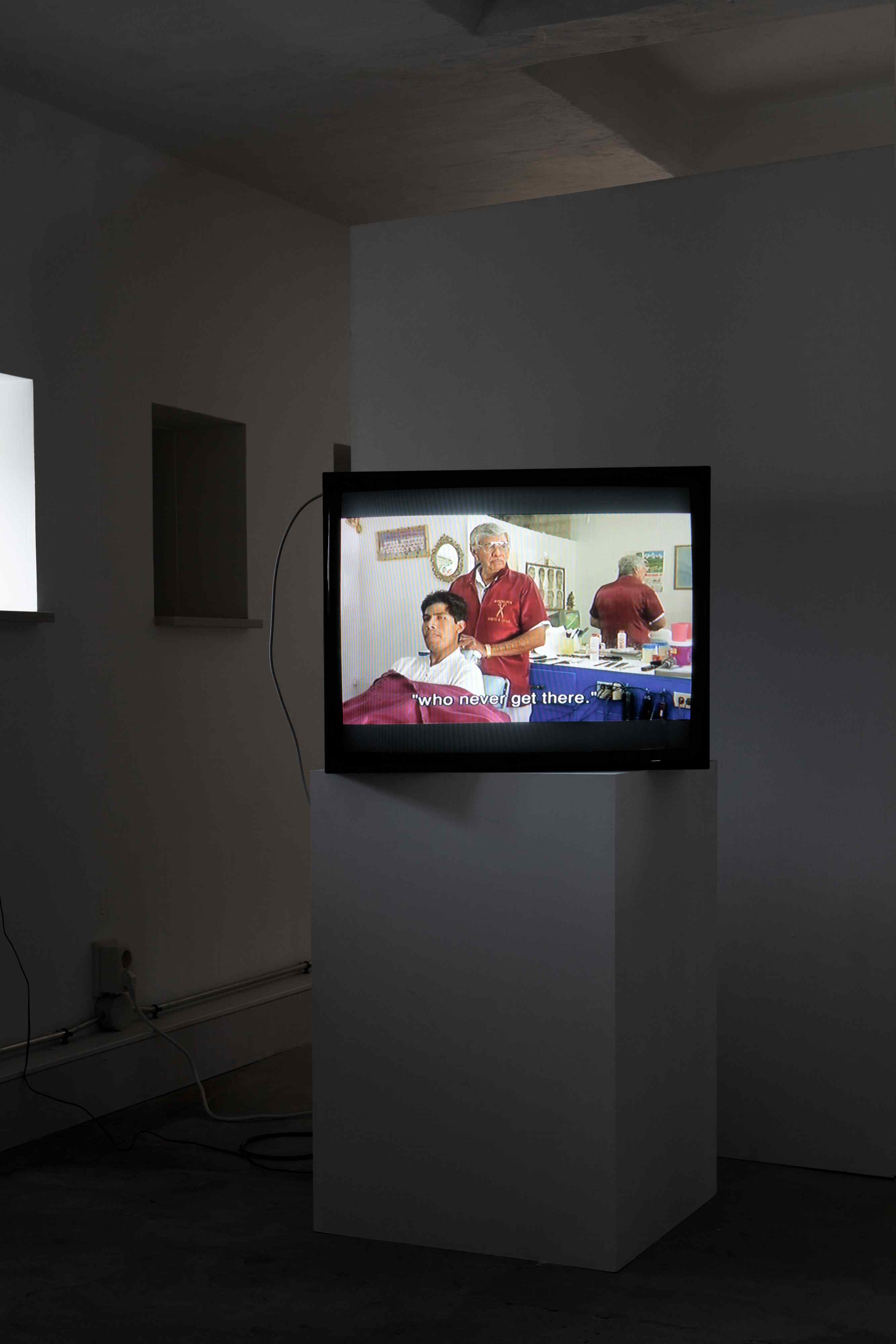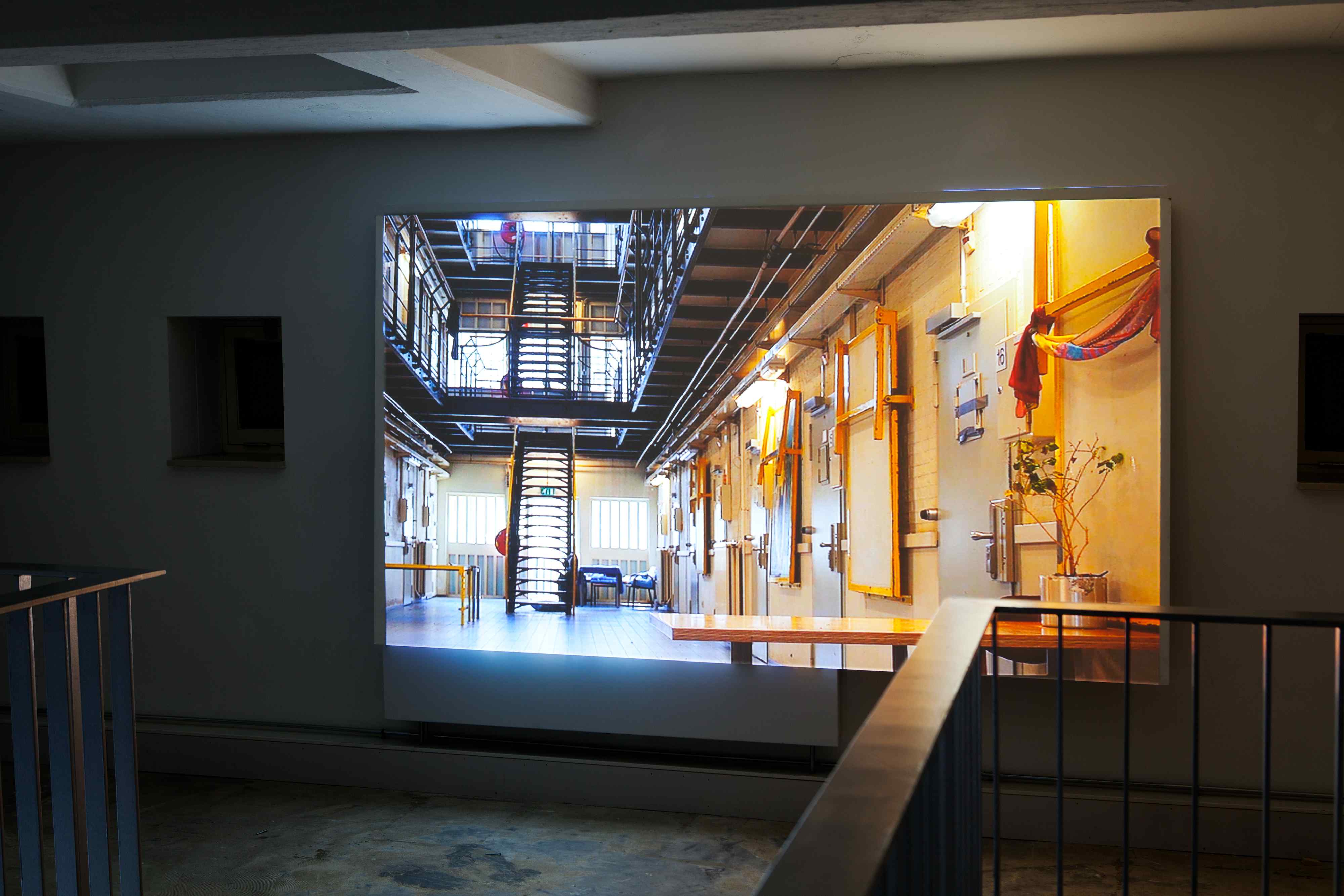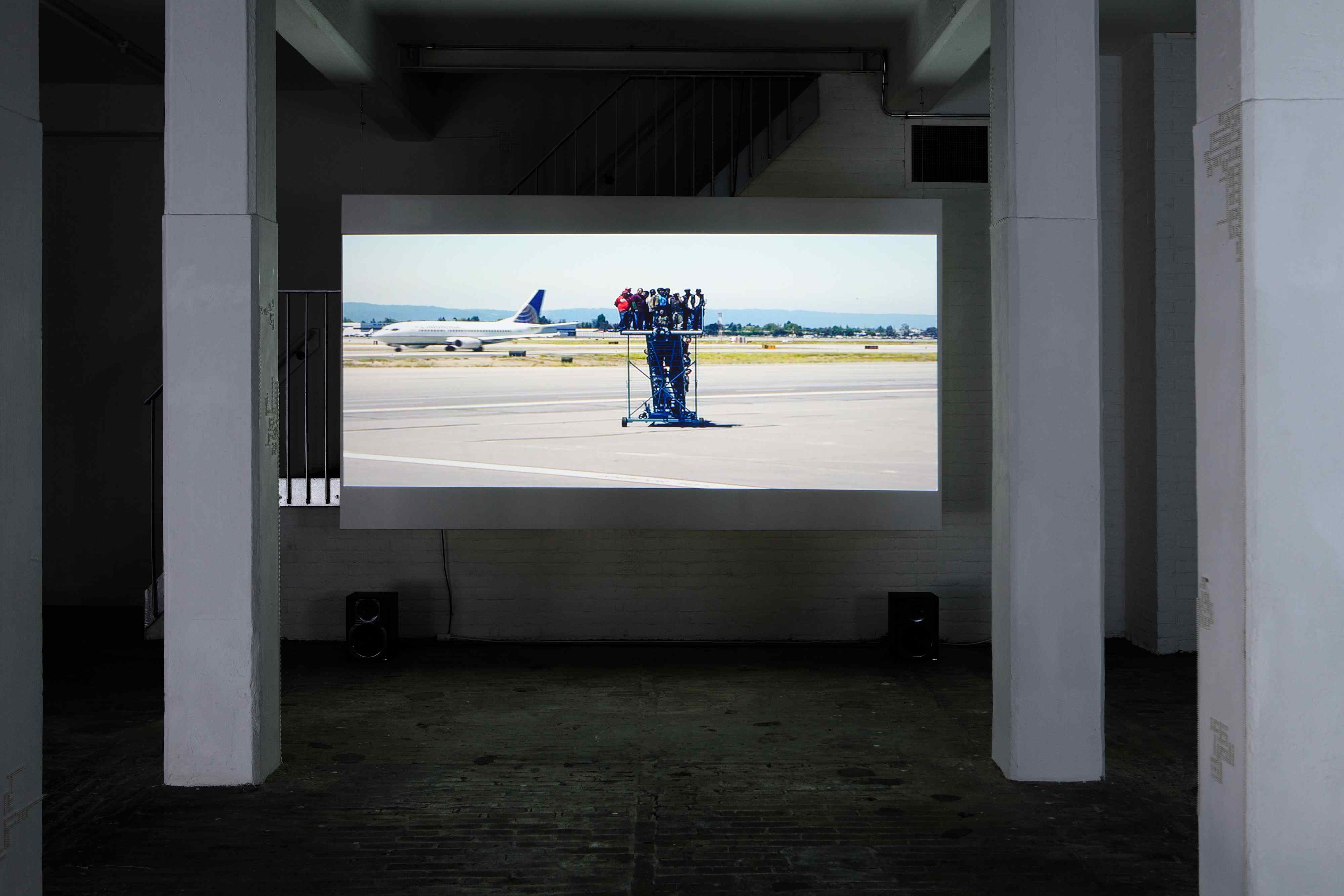EXHIBITION
The Migrant (Moving) Image

A Tale of A Tub and EYE present the film program The Migrant (Moving) Image. The program sheds new light on the migration crisis from an artistic perspective. Writers Kader Abdolah, Abdelkader Benali, Bas Heijne and theatre director Ola Mafaalani respond to the artworks shown in the program.
After Rotterdam, Berlin, Ramallah, Marrakech, Miami, and New York we initiative a conversation in Amsterdam about an alternative image of a society in which migration is an inescapable fact and is inextricably linked to our contemporary social, political, and economic reality. The gates of Europe are being met by more refugees than ever. Meanwhile, the migratory question is leading to internal disunion as instability in the surrounding regions of the EU increases. With the program The Migrant (Moving) Image, A Tale of A Tub sheds new light on a society in which migration is a determinant factor and is inextricably linked to contemporary social, political, and economic reality.
The image that is being portrayed in the media of the migration crisis is creating great worries worldwide, tapping into contradictory collective emotions of pity and fear. Within a framework of visual dominance, mass media has become a powerful tool and is one of the main determinants of public opinion. The idea of the migrant is mainly based on the images that are being circulated on (social) media. Even though these images form an important component of the migration influx, they are certainly not direct representations of reality.
News coverage about migrants systematically portrays the migrant as ‘the other’. Furthermore, the images that make it to our newspapers or our Facebook timelines either focus predominately on the tragedies taking place at the border of Fortress Europe or underline the idea that migration forms a threat to European stability. These are the perspectives that the mainstream media commonly emphasise in their sensationalist accounts of migration, even when they report on Europe’s inability to deal appropriately with the current influx of migrants or on the reactionary responses to immigrants. The result is a poor representation of the main protagonist of these images, who is being reduced to either victim or criminal. The complexity and impact of migration on the lives of individuals and on society at large gets lost.
Through a program of films, documentaries and public events, The Migrant (Moving) Image explores the possibility of an alternative image of a world in flux, beyond Fortress Europe. Artists featured in The Migrant (Moving) Image have image-based artistic practices rooted in photography, cinema, or new media formats. Often, the work is informed by the artist’s distinct biographical experience of migration or exile.
CHAPTER I
Departure: Harraga (14 – 29 November 2015)
URSULA BIEMANN
CENTER FOR POLITICAL BEAUTY
FOUAD ELKORY
MOUNIR FATMI
ALFREDO JAAR
ISAAC JULIEN
RUNO LAGOMARSINO
PAULO NAZARETH
ADRIAN PACI
NICOLAS PROVOST
ZINEB SEDIRA
Harraga is the Arabic name for illegal migrants and literally means “those who burn”. The name relates to the illegal practice of burning immigration papers that tie them to their homeland, before embarking on their journey. In order to start a new life, they need to burn their metaphorical bridges, to prevent a forced return to their previous lives. However, this radical act could also be interpreted differently. Migrants move through political, social, and economic borders. Perhaps what the harraga aims to destroy are the boundaries that restrict people in their mobility. The films in this chapter tell the stories of those who need to live without identity papers, and about life in exile from your homeland. This chapter pushes you to reflect on your own skin, the possibility of radical equality, and breaking with fixed forms of identity.
CHAPTER II
Transit: Centro di Permaneza Temporanea (4 – 13 December 2015)
CHANTAL AKERMAN
MARCO AVILA FORERO
OLFA BEN ALI
HALIDA BOUGHRIET
LAURENT GRASSO
MICHAEL HELFMANN
ISAAC JULIEN
MOSHEKWA LANGA
DANIELA ORTIZ
XOSÉ QUIROGA
ADRIAN PACI
ENRIQUE RAMÍREZ
Centro di Pemanenza Temporanea (literally Center for Temporary Permanence) is the Italian name for detention centres where refugees and illegal immigrants are kept before being rejected to their country of origin. The name also refers to the contradictory state of being ‘permanently temporary’ and the pervasive insecurity and anxiety that comes with the need for incessant mobility. This chapter sheds light on the inescapable fact that contemporary life is marked by a permanent state of transition: on the one hand the smooth flow of data and communication, and on the other the movement of smugglers, people and ‘goods’. Films in this chapter testify to the plight of those displaced by war, poverty or inequality and the—often futile—attempts to reach a destination, only to find oneself entrapped, it testifies to the paradoxical reality of a life caught between deportation and conflict, between a homeland and the land of one’s dreams.
CHAPTER III
Arrival: Heimweh, Fernweh (18 December 2015 – 10 January 2016)
KNUT ÅSDAM
SAID ATABEKOV
ALI CHERRI
DANI DANISH
MOUNIR FATMI
DOR GUEZ
HAMZA HALLOUBI
MONA HATOUM
ISAAC JULIEN
GERALD MACHONA
Can we still imagine a place to call home in a rapidly changing world where people, power, culture, and information are constantly evolving and moving? In a world marked by migration and displacement Heimweh (homesickness) and Fernweh (longing for a distant place) are intrinsically connected. The Portuguese notion of Saudade also embodies the many aspects of this sense of longing for something, which cannot be reached; the desire for a place to belong in the world. The films in this section reflect on what it means to live between two cultures, to be foreign, to search for a place to call home in an alien world.
EPILOGUE
The Shores of an Island I Only Skirted (15 – 24 January 2016)
SANDER BREURE
WITTE VAN HULZEN
The film program The Migrant (Moving) Image concludes with the epilogue: The Shores of an Island I Only Skirted. The double projection shows images of a small, seemingly idyllic island. However, when we learn that this is Utøya—the place that is marked by the unprecedented tragedy of Anders Breivik’s politically motivated massacre of 2011—the image of the seemingly peaceful island is shrouded by an uncanny, haunting atmosphere. Meanwhile, the other side of the installation shows a collage of found footage images of migration. The Shores of an Island I Only Skirted sketches a disturbing image of Europe: a metaphorical island that is often imagined as a utopia, but for many proves to be just the opposite.
The Migrant (Moving) Image is supported by DeltaPORT Donation Fund, Mendes Wood DM, and a research grant from the Mondriaan Fund. Warmest thanks to all our volunteers for their help realising The Migrant (Moving) Image.
EVENT
14.11.2015, 17:00 – 20:00
Opening
The Migrant (Moving) Image: Chapter I
EVENT
07.09.2016, 19:00 – 23:00
Film Program
The Migrant (Moving) Image @ EYE Amsterdam
EVENT
13.09.2016, 19:00 – 23:00
Film Program
The Migrant (Moving) Image @ EYE Amsterdam
EVENT
24.01.2016, 16:00 – 19:00
Closing Event
The Migrant (Moving) Image






